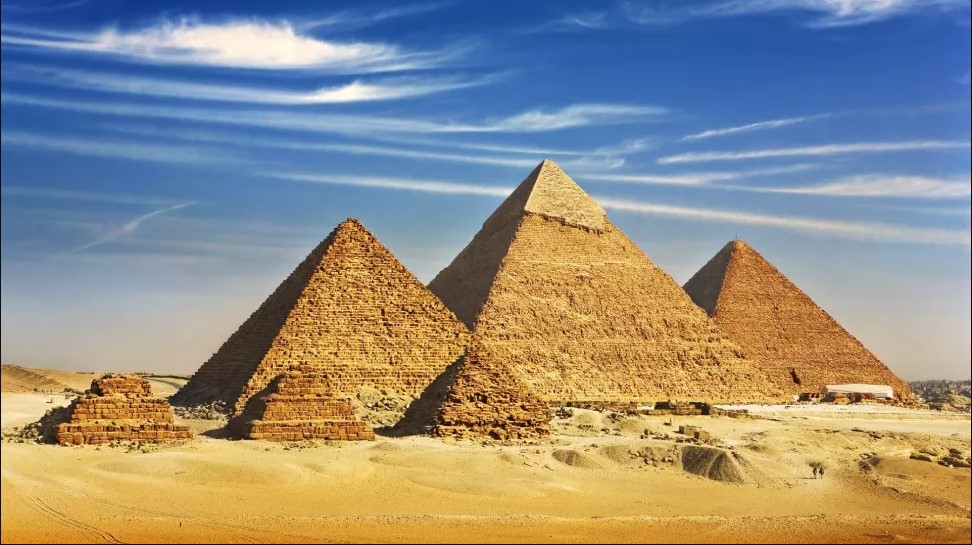
View from the Giza Plateau of the three pyramids known as Queens’ Pyramids with three smaller three satellite pyramids in front. In order from left to right: the Pyramid of Menkaure, Khafre and then Khufu. (Image credit: WitR via Shutterstock)
The Giza Pyramids have stood the test of time and remain one of the most impressive legacies of the Old Kingdom era of Ancient Egypt. Built as a testament to the Pharaohs’ beliefs that they would become gods in the afterlife, the pyramids are monuments to the Pharaohs Khufu, Khafre, and Menkaure.
The Great Pyramid of Khufu is the largest of the three pyramids, standing at an impressive 481 feet (147 meters). Built from an estimated 2.3 million stone blocks, each weighing between 2.5 and 15 tons, it is a testament to the engineering and architectural prowess of the Ancient Egyptians.
The second pyramid was built by Khafre and included the mysterious Sphinx, a limestone monument featuring the body of a lion and a Pharaoh’s head. The third pyramid, built by Menkaure, was considerably smaller but featured a much more complex mortuary temple.
Each of these pyramids is part of a larger complex, which includes a palace, temples, and solar boat pits. The Giza Pyramids are an enduring symbol of the Ancient Egyptians’ power, wealth, and ambition.
BUILDING BOOM
It’s incredible that the Pyramids of Giza, a marvel of ancient engineering, were constructed thousands of years ago. Even now, scientists are still determining exactly how they were built. However, much has been learned about the people responsible for the construction and the political power that enabled it.
Archaeological research has revealed that skilled, well-fed Egyptian workers lived in a nearby temporary city and were provided for by a highly organized and resource-rich community likely supported by a strong central government.
It is thought that communities from all over Egypt contributed workers, food, and other essentials to this national project, which was designed to showcase the wealth and power of the pharaohs. Zahi Hawass, the secretary general of Egypt’s Supreme Council of Antiquities and a National Geographic explorer-in-residence, has stated that, in a way, it was the Pyramids that built Egypt rather than the other way around.
PRESERVING THE PAST
The Pyramids of Giza have served not only as a reminder of the greatness of ancient Egypt but also as a way to explore the long-vanished world. Peter Der Manuelian, an Egyptologist from the Museum of Fine Arts, Boston and Tufts University, explains that the tombs, with their intricate art, offer insight into all aspects of life in ancient Egypt.
The Giza Archives Project, led by Der Manuelian, is an extensive collection of photos, plans, drawings, manuscripts, records of artifacts, and expedition diaries that allow people to explore the plateau virtually.
This project provides access to information from the Harvard-Museum of Fine Arts, Boston Expedition (1902-47), and will eventually become the world’s largest online repository for Giza-related material. However, Der Manuelian emphasizes that nothing can compare to a visit to Giza in person.
THE FUTURE OF THE PYRAMIDS
Since the onset of the Arab Spring in 2011, visits to the Pyramids of Egypt have sharply decreased due to the political turmoil that ensued in the country. Numerous government changes have taken place since then, leaving the future of tourism to the Pyramids uncertain.
Leave a Reply